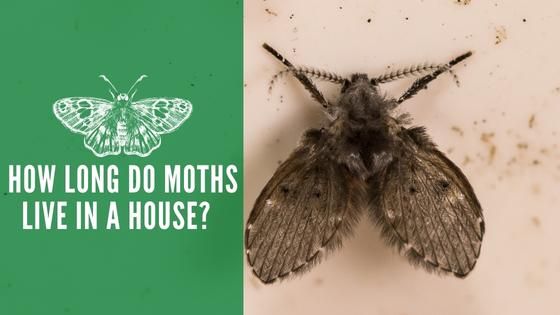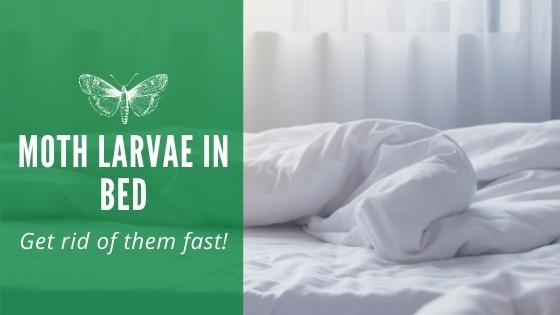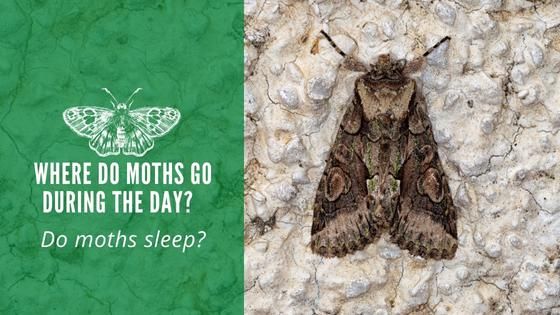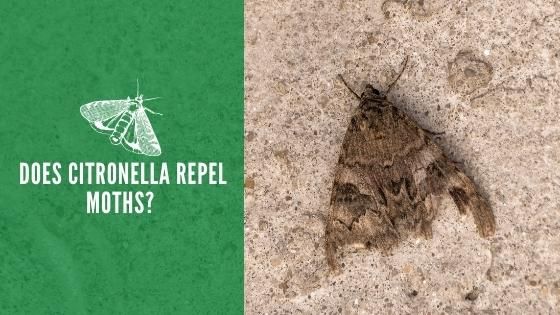How Long Do Moths Live In a House?

The image of moth-eaten blankets and furniture always brings to mind an old house that’s been vacant for years. However, you can’t help but wonder how long a moth could live in a house without a regular food supply. Learning more about the moth life cycle gives you insight into how long you could deal with an infestation.
How Long Can a Moth Live Inside Your House?
The moth life cycle involves several stages: an egg, larva, pupa, and then an adult moth.
The development time to turn from an egg into an adult moth can take up to two full years, but the average life span for an adult is around a couple of weeks to a month.
Most house moths spend most of their time in a larval stage, which is the same stage of their life cycle where they eat most.
How Do Moths Get Into Your Home?
You can do your best to keep moths from coming inside when you open the door, but they often come into houses in less obvious ways.
Small cracks around the windows or breaks in the screens are common for moths to come indoors.
Similar to bed bugs, clothing moths can hitch a ride on secondhand clothing and furniture you bring into your home.
Pantry moths are often lurking in packaged goods such as flour and cereal that you bring home from the grocery store. It’s generally a good idea to thoroughly inspect any items you bring into your house that could harbor a pest infestation.
You can also take further steps to prevent moths from invading by transferring food items in cardboard or paper packaging to plastic containers.
What Attracts Moths to Your House?
Moths aren’t attracted to your house, but they tend to come closer when they find a light source. Turning off outdoor lights can help you to prevent having them swarm your home’s exterior doors.

As for the ones you accidentally bring inside, they start finding a food source or a place to lay their eggs.
Attractants for moths tend to vary according to their type. For instance, clothes moths prefer animal fibers, such as wool and silk.
Pantry moths will look for dry goods such as powdered milk, crackers, and even chocolate. You might even find them hanging out in the pet food or enjoying some dried fruit.
How Long Do Moths Live In a House Without Food?
If you’re trying to starve out clothing moths, you will have a hard time. They’ll eat through carpet, upholstery, and even mounted animal fur to get their fill.
Pantry moths are a little easier to eliminate by eliminating food sources, but not by much. They technically can’t reproduce well without adequate food sources. However, their extended life cycle makes it hard to make them starve.
Adult moths don’t need to eat much, and some won’t eat at all. Their primary purpose in life is mating and laying eggs, which can include as many as 380 of them all being put into your pantry or closet.
Once moths are in the larval or pupal stage, they can go for months without eating. You might also find it incredibly hard to eliminate all of the food sources in your house completely.
Many failed starvation attempts are caused by the moths finding food in places you wouldn’t expect, such as corn meal stored in the garage for gardening purposes.
During the larval stage, moths can also move around freely to locate a new food source for survival.
Will the Moths Cause Damage?
Clothing moths can easily ruin your favorite outfits or your grandparent’s quilt that holds sentimental value.
Depending upon where they decide to feed, you could be forced to replace the flooring in your house or expensive furniture.
Pantry moths aren’t particularly dangerous for your health, but they’ll create webbing, leave castings and drop fecal pellets into your food. Plus, just seeing a pupa in your food is plain unappetizing.
You could be looking at having to toss out large amounts of groceries with serious infestations. Having to replace a large food collection gets expensive, so it is important to be alert for the signs of a moth infestation.
How Do You Know Where the Moths Are Coming From?
Seeing moths flying around your house can get confusing. It’s absolutely possible that you could see a pantry moth flying near the clothes in your closet and a clothing moth lurking around the pantry.
This is why you’ll need to do a little detective work. You can start by looking in the area where you see the most moths. In your closet, you might find tunnels or trenches that have been chewed into clothing from natural fabrics.
Keep in mind, however, that a desperate moth might go for synthetic materials. This is especially common if they find a stain that could serve as a food source.
Clothing moths also tend to leave little tubes that are larva casings behind, or you might even find a moth in its pupal state.
Pantry moths also leave a few telltale signs. You might see a small hole in a bag that served as their entry point. Upon closer inspection, you could also see webbing inside of the packaging or in the pantry corners.
Tiny eggs or larvae could also be visible, and adult moths might be hiding around the ceiling or shelves.
How to Get Rid of Moths In Your House?
Flying insects are a nuisance, and you’ll want to address finding even a single moth right away since it could be ready to lay several hundred eggs.
Your first step to getting rid of the moths is to arrange for an inspection. This will help you identify all the moths’ hiding places and determine whether or not you’re dealing with a pantry or clothing problem.
Although you’ll find various remedies on the market, professional spraying is the best way to eliminate moths. As the moths begin to die off, you’ll also want to be vigilant about keeping new ones from coming to your house.
Practicing proper food storage and keeping your off-season clothing clean and stored in airtight containers helps prevent moths from viewing your house as an excellent place to reproduce and feed their larva.




